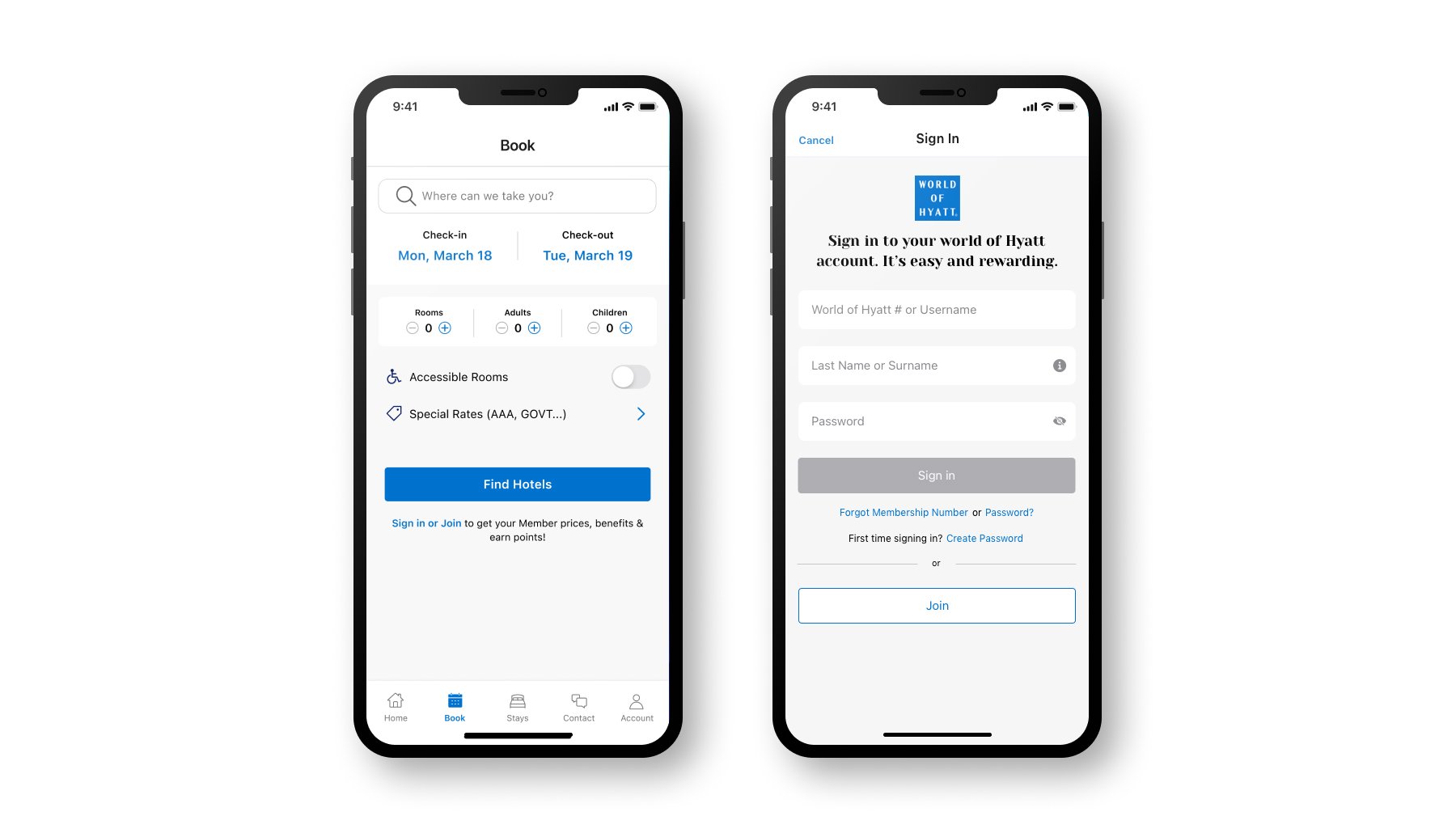Hyatt Hotels - App Ungate
Challenge
Will not requiring users to sign into the app increase room booking revenue?
When the World of Hyatt app was first released, after a loading animation users were presented with a log in or join screen and a link that took them to the web version for booking a room if they didn’t want to go with either of those options. No one could use the app without becoming a member first. We needed to look at the entire mobile app architecture and figure out where and how we could present an ungated experience that encouraged users to explore regardless of their member status.
My Role & Team
I was the Senior Product Designer working within a triad group alongside a product manager and engineering manager. We had a team of 6+ engineers ranging in specialties from front end, back end, SDET, QA and partnered with our research team.
Research & Data
We had solid data showing the abandonment rate from that initial log in or join screen was high. This could have been due to a number of reasons, for instance getting logged out and forgetting login information, but that should not end the experience. We utilized existing research from the web to help make informed decisions as to where and how to implement the best approach. While not a 1:1 experience, it was important to maintain consistency as much as possible.
Pain Points
High abandonment rates
Users not being able to explore member benefits
Users not being able to explore room and properties
Requiring to be a member to book a room
Ideation & Process
First we had to look at the entire app architecture and identify where we needed to prompt a member to log in and where we could remove it. The room booking flow was a high focus area due to being the main driver of revenue for the app. There were different rates options for members and non-members that prompted the need to create similar but separate flows. Offering simple ways to join if you go through the entire booking flow was important to reduce friction and user frustration. Being able to utilize the learnings from the web was very valuable here.
A fully authenticated experience allows access to all the app features, so analyzing which ones could work and which ones we could market to entice sign up was important during the whole process. For instance, being able to access details about current and past stays or member loyalty and reward information had to all be thought through and vetted with all the various teams.
Reflection
Post launch resulted in an increase of un-authenticated user engagement
Booking revenue did increase but marginally
During the entire process of this project there was a wealth of knowledge I gained. From a technical feasibility standpoint, many findings were uncovered that influenced the end product. Building a scalable product requires the right foundation from a platform code perspective – Custom coding might get things done quicker but presents a scalability issue. We had to balance the needs of the business, timelines and stakeholder expectations.
Sometimes you have to introduce necessary friction to meet business goals and entice users to perform a desired outcome. Becoming a member was free and you could save money by simply giving your name and email. Removing all the gates wasn’t necessary but allowing exploration was key to get users engaged and to book.



